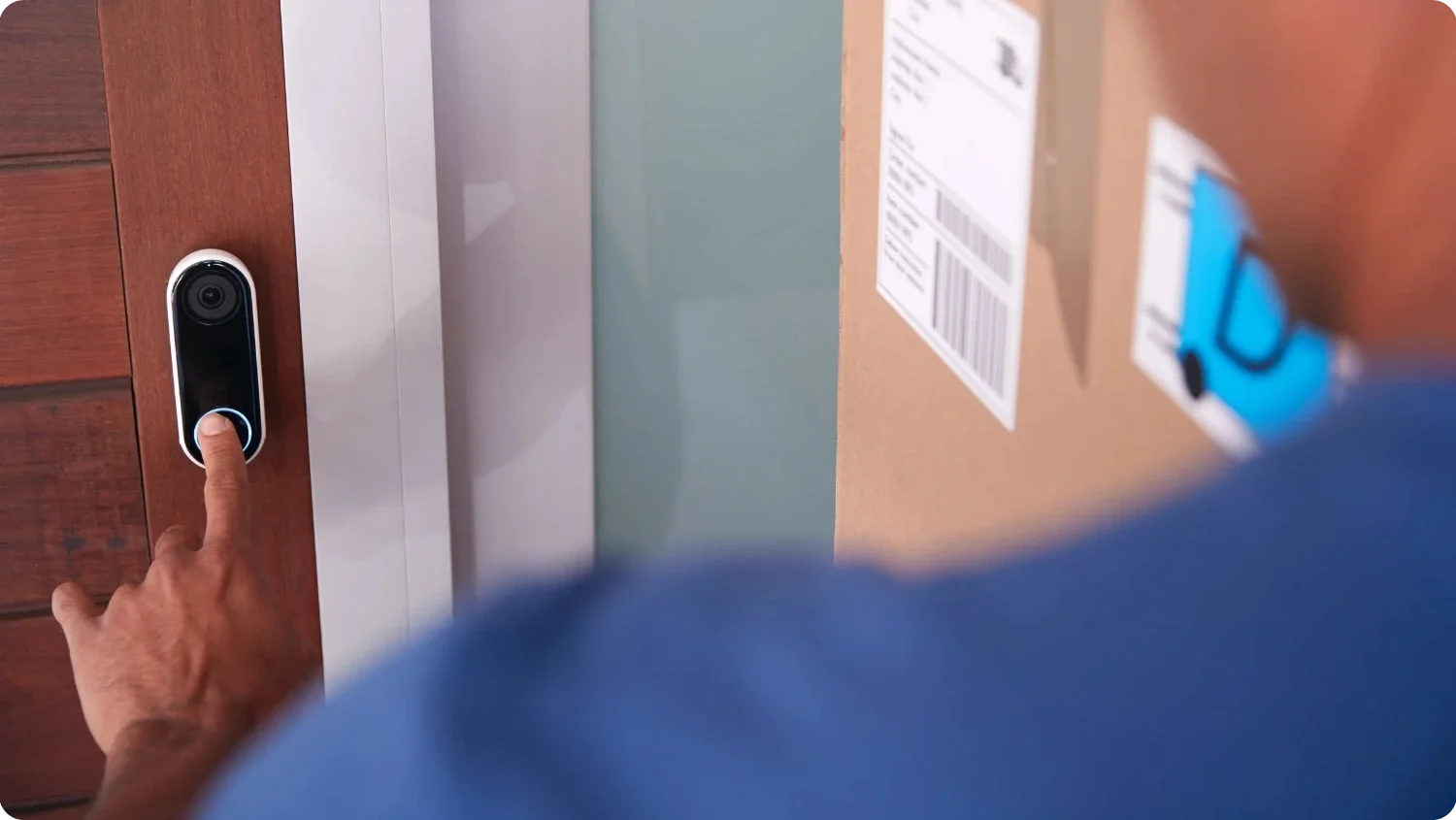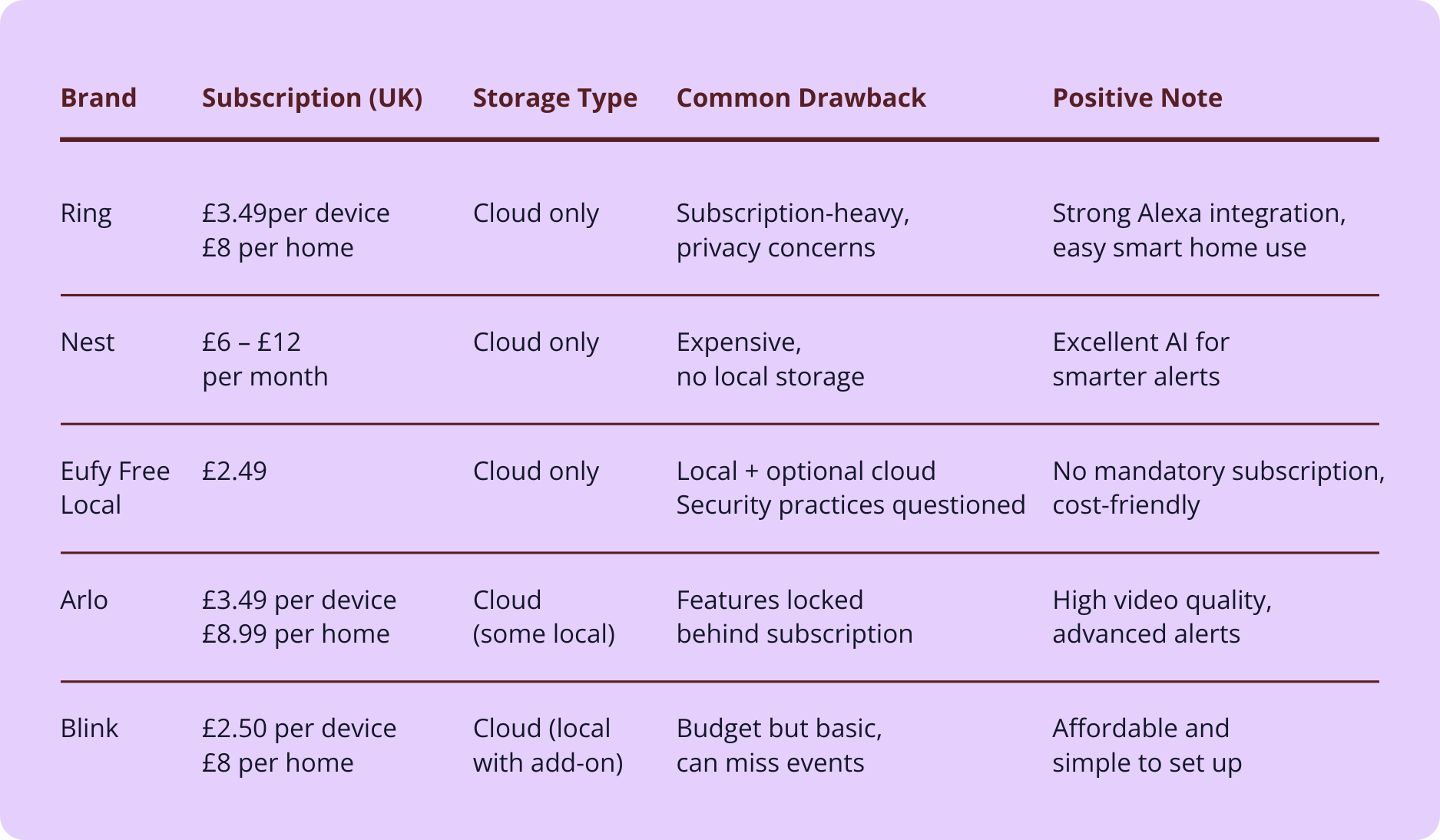The Truth About: Video Doorbells in London
Video doorbells have become increasingly popular in London and across the UK, with options from Ring, Nest, Eufy, Arlo, and Blink topping the market. They promise extra security and convenience, though real-world experiences (aka thanks to CiD’s in-house Home Tech expert Mike) show they’re not without issues.
If you’re considering installing a video doorbell, or changing to another brand, this guide is designed to help you make an informed choice.
01 | 🔒 Security & Privacy
How your footage is stored and shared is one of the biggest concerns:
Ring (Amazon) – Well supported in the UK, but has faced scrutiny for past partnerships with police. All recordings are stored on Amazon servers, often outside the UK. On the other hand, Ring integrates seamlessly with Alexa and Amazon’s wider ecosystem, which makes it easy for many households to add to their smart home setup.
Nest (Google) – Requires cloud storage; with no local storage option. Without a Nest Aware plan, you only have live viewing. However, Nest’s AI-driven event detection is among the most accurate on the market, helping to reduce false alerts about passing people or vehicles.
Eufy (Anker) – Promotes local storage via its HomeBase hub. Some users and researchers have raised questions about past encryption practices. Despite this, Eufy remains popular because it doesn’t force users into subscriptions, making it more cost-effective in the long run.
Arlo – Subscription-focused, with most features tied to its cloud service. Data is stored outside the UK, even though GDPR compliance is claimed. Still, Arlo is recognised for its high-quality video resolution and advanced alerts, appealing to those who’d like crisp footage and extra detail.
Blink (Amazon) – Cheapest entry point, but largely cloud-based unless you add a Sync Module 2 and USB stick. However its affordability and straightforward setup make it attractive to households wanting a simple way to start using a video doorbell.
👉 Takeaway: If privacy is your top concern, check the provider’s storage options carefully. Cloud is the norm, and GDPR compliance doesn’t always equal total control. This is especially worth noting in London, where many front doors face directly onto the pavement and cameras can capture neighbouring properties or public spaces.
02 | 🎥 Video & Audio Lag
One of the most common complaints in the UK is delay:
Typical delays are often a few seconds between the doorbell being pressed and a notification arriving on your phone.
Some users have reported longer lags, sometimes 10 seconds or more, particularly on battery models or when broadband / Wi-Fi is weaker or more congested.
In isolated cases, notifications have been significantly delayed, sometimes so much the visitor has left before the owner could respond.
Despite this, when conditions are good, many users do find the live video feature convenient, allowing them to quickly check in on their doorstep activity without needing to physically answer the door.
👉 Takeaway: Even in good conditions, don’t expect instant, intercom-like performance. Lag varies by brand, Wi-Fi setup, and network load. In London flats and terraces where multiple Wi-Fi networks overlap, delays can be more noticeable.
03 | 💾 Subscription Costs & Footage Ownership
Most UK-sold video doorbells rely on subscriptions for storing video history:
Ring Protect – From £3.49/month per device or £8/month per household.
Nest Aware – From £6/month; £12/month for extended history.
Eufy – Local storage included; optional cloud from £2.49/month.
Arlo Secure – From £3.49/month per device; £8.99/month for multiple cameras.
Blink – From £2.50/month per device; £8/month for a household.
Without these plans, many doorbells only provide live notifications with no saved footage. But when subscriptions are active, these services do add useful functionality, such as extended video history, person detection, and delivery alerts, which many households value for peace of mind.
👉 Takeaway: Check the small print. Subscription fees are effectively part of the purchase price if you want useful features. For Londoners with frequent parcel deliveries, saved footage can be the difference between resolving or losing a delivery dispute.
04 | 🔋 Battery & Power Challenges in the UK
Batteries don’t always last as long as advertised:
UK winter temperatures can shorten battery life dramatically, with many users needing to recharge every 3–6 weeks instead of the “months” being claimed.
If you don’t keep a spare battery, recharging means losing coverage temporarily.
Older homes sometimes lack compatible wiring for hardwired installations (as the alternative to battery powered), which means an electrician may be needed.
On the plus side, the option of going fully battery-powered makes video doorbells flexible and easy to install, even where wiring isn’t available - something which appeals to renters and those in London’s older period properties.
👉 Takeaway: Factor in the cost of spare batteries and hassle of charging - or consider professionally hardwired installation.
05 | 🚪 Motion Triggers & Reliability
Motion alerts sound useful but can be hit-and-miss:
Homes on busy London streets often receive false alerts from pedestrians and passing cars.
Cheaper models may miss events entirely if the sensor or camera trigger is too slow.
Night vision can struggle with brickwork and street lighting, leading to unclear or overexposed footage.
That said, the ability to customise detection zones and receive instant notifications is one of the main reasons homeowners like video doorbells - they provide a layer of awareness a traditional doorbell doesn’t offer.
👉 Takeaway: Motion detection is useful, but don’t rely on it as a guaranteed replacement for more sophisticated security.
06 | 📊 Comparison Table
07 | ✅ Final Thoughts
Video doorbells are very convenient tools, though to make an informed choice, it’s a good idea to be aware of their limitations:
Lag: Notifications can be delayed by several seconds or more.
Subscriptions: Most useful features sit behind a monthly fee.
Privacy: Cloud storage means you rarely have sole control of your recordings.
Power: Batteries drain faster in cold weather than expected.
Triggers: Motion detection can be both over-sensitive and unreliable, especially in high-footfall urban areas.
That said, each brand does have strengths: Ring’s ecosystem is easy to integrate, Nest is smart at recognising events, Eufy avoids mandatory subscriptions, Arlo provides excellent video quality, and Blink offers an affordable entry point.
⚖️ Disclaimer: This article is based on widely reported user experiences in the UK, manufacturer specifications, and published community feedback. Actual performance will vary depending on broadband quality, Wi-Fi strength, and home setup.
08 | 👋 Beyond Retail Doorbells
For homeowners who would like peace of mind without dealing with subscription fees, lag, or battery swaps, professionally installed intercom and CCTV systems offer a more robust alternative. These systems are designed for reliability, tailored to each property, and can provide secure local recording and clearer two-way communication.
If you’d like advice on whether a professional system might be a better fit for your London home, we’re always happy to help. You can reach Mike our Home Tech expert at: mike@consider-it-done.co.uk



